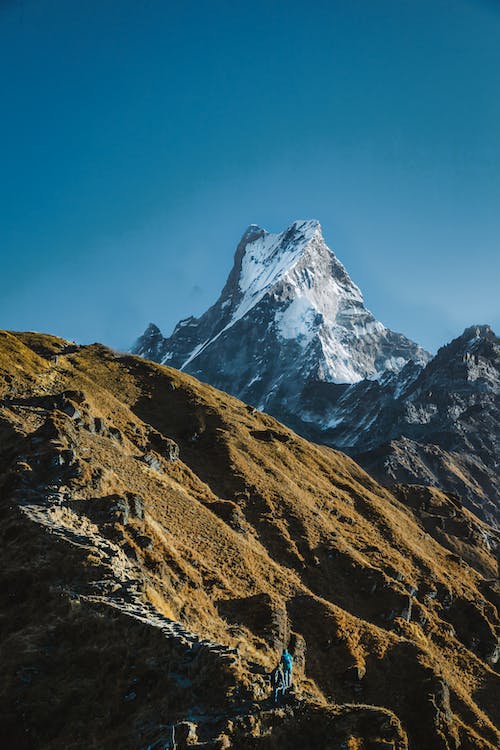Whether you are a newbie or a veteran hiker, climbing Nepal offers a wide variety of treks that suit each choice. Nepalese Himalayas terrains offer various stunning trekking routes. Nepal is home to several world’s high mountain ranges, fascinating culture and history, and beautiful, welcoming communities. No wonder it is a favorite spot for travelers and hikers for holiday adventures. It attracts more than 200 000 trekkers each year. It’s tough to decide which mountain or trekking spot you will go for since there are many choices. But here are a few things to consider before making your final decision.
What to consider in choosing a trekking spot in Nepal
- Know your hiking capabilities and skills and experiences
- Check on available equipment
- Budget
- Purpose of the trek and time allocation
- Season, weather
- Altitude
- Trek routes
Trek routes
Khumbu Region
It is also known as the Everest Region as the highest peak in the world is located here, making it the most popular trekking spot among the Himalaya Trails in Nepal. There are countless visitors each year coming to the Everest Base Camp Trek.
Major attractions you can explore in the region include the Sherpa Museum, Sherpa Culture and their way of life in Khumjung Village, scenic turquoise Gokyo Lake, Cross Chola Pass (5300m), Kangma La(5500m), and Renjo -La(5400), Khumbu Ice Fall from Everest Base Camp, visit Tengboche Monastery and a lot more.
The region has many trekking routes, but the most popular and preferred alternatives are the Everest Base Camp trek, which lies at 5360meters. Moreover, wonderful peak views of Pumori (7,145m), Lingtren (6,697m), Khumbutse (6,623m), etc. will greet you on your trek to Kalapathhar lying at the altitude of 5550m from the base camp.
Coming in and out of the Khumbu is possible with a small aircraft via Lukla or just a walk from Jiri. Lukla’s runway has about 12 degrees slope with a cliff on one end and a mountain on the other.
Annapurna Region
Annapurna, located near Pokhara, is the second well-traveled trekking region of Nepal, with almost a hundred thousand trekkers visiting each year. Annapurna Base Camp Trek touches on all of the highlights, including stunning vistas of region herself. It is also a less crowded base camp at Annapurna Sanctuary Trek that stops at Annapurna Base Camp. If you have a limited time, you can go for Annapurna panorama trek, also known as Poon Hill, which offers an excellent opportunity to trek and enjoy the views.
In this region, trekking altitudes are quite lower than in the Khumbu region, and with easier logistics. Treks usually begin in the city of Pokhara, nestled next to a stunning lake. The routes also provide a fantastic and magnificent Annapurna and Dhaulagiri Himalayan ranges and unique biodiversity and Thakali, Gurung, and Magar communities’ cultures.
Mustang Region
This region is an isolated and remote area nestled in the Himalaya. It is surrounded by mountains and has a colder and arid climate. Only a thousand visitors come each year due to strict regulations of tourists to maintain Tibetan traditions. And the scenery is different from the rest of the Himalaya.
It reaches 13, 200 average elevations, coming to a peak at 8,167m — the summit of Dhaulagiri. It is characterized by a vast and arid valley, notable by eroded canyons, vividly colored stratified rock formations, and barren high-altitude deserts. The region has an average annual rainfall of less than 260 mm at Jomsom in the Lower Mustang.
Manaslu Region
With an elevation of 8, 156 meters, Manaslu stands the eighth tallest mountain in the world. Another off-the-beaten-path destination, with lesser crowds, this trek takes you through mountain passes and lush forests. The trek around Manaslu eventually joins up with the Annapurna Circuit nearby.
Langtang region
Lantang is Nepal’s first national park, located near Kathmandu close to Tibet. It is one of the most easily accessible Himalayan treks in Nepal but offers many mountain beauty, abundant wildlife, and incredible culture. The region’s known features are Red Panda, Rhododendrons, Langtang Himalayan ranges, glaciers, and Buddhist culture and heritage of Tamang and Tibetan communities.
When is the best time to trek in Nepal?
Weather says a lot about the trekking journey you will encounter. So it would be best to know when the best time to hike is. Planning a trek in Nepal is best done during the pre- and post-monsoon seasons that fall from March to May and October to December. You will enjoy the vast view of blooming flowers during pre-monsoon, especially the rhododendron, which is native to Nepal. In May and early June, days are warmer, with bright mornings and rainstorms usually in the afternoons.
What is the weather like day to day in the Himalayas?
The temperature is just good enough to spend a walk in the region, but it gets colder as you reach higher elevations. It would always be best to bring waterproof jackets and trousers. Raincoats and umbrellas are also useful for rain showers. But tea shops and coffee shops are along the way to give some warmth while you are on the trek.

